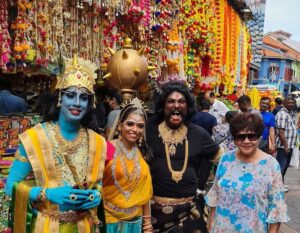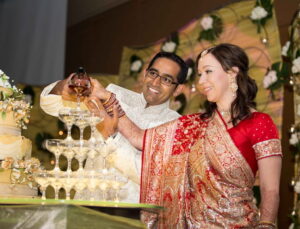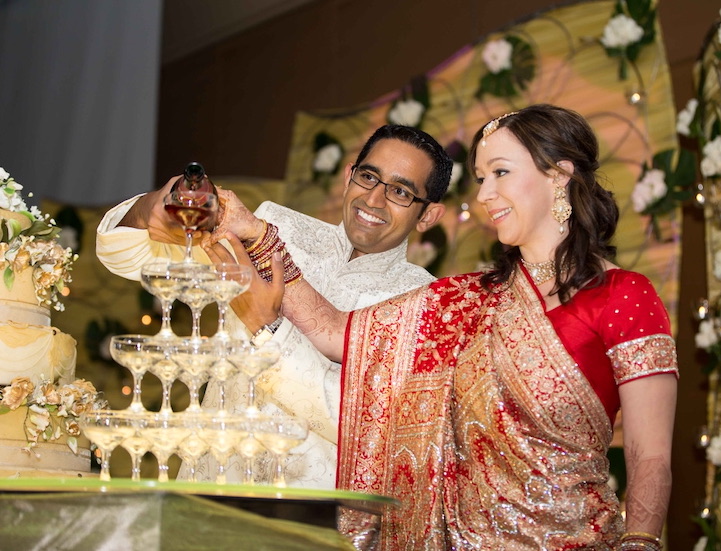
“Having married into an Indian family, I have learned a lot about cultural expectations that I never discovered as an American looking in from the outside. I have come to recognise the importance of compromise and to see the common threads between different cultures.”
In my opinion, the sari is the ultimate formalwear. Graciously draping women of all shapes and sizes, it’s impossible not to look lovely in a sari. When I moved to India as a teenager, I would see female labourers wearing saris carrying bricks or buckets of liquid cement up and down building sites. Despite their hard work in the scorching heat, they exuded elegance in their brightly coloured cotton saris. In South India, women love to wear pure silk Kanchipuram saris for their most formal occasions. These are heavy, usually embroidered with gold thread and in bold solid colours.
Read More: Where to shop saris and Indian fashion
When I was 14, my parents and I left the Bay Area of California and moved to Chennai, India. While they lived and worked in Chennai, I was a short overnight train trip away in the Nilgiris mountains of Tamil Nadu at a British boarding school. For our graduation, the girls in my class wore saris. It was a symbol of us coming of age, although at 16 I doubt any of us really felt like adults.
Since then, I’ve worn saris a number of times, most notably while I attended the Indian Defence Services Staff College (DSSC, coincidentally also located in the Nilgiris mountains), as an American Army officer representing my country on the course. I always felt so glamorous wearing a sari, and the effort was appreciated by my colleagues who saw it as an attempt to bridge a cultural divide. My fellow American colleague and I even wore Stars and Stripes-themed saris when we gave a presentation on the USA to our Indian and international classmates.
Read More: Cultural Wear: Appropriation vs. Appreciation
I met my husband at DSSC, an Indian Singaporean Army Officer. Marrying into a Gujarati family, I learned that they have a different way to tie the sari so the pallu lays on front. For our wedding, I had the privilege of wearing several beautiful saris given to me by my new family. They symbolised my husband’s family’s welcome, and I will always treasure them.
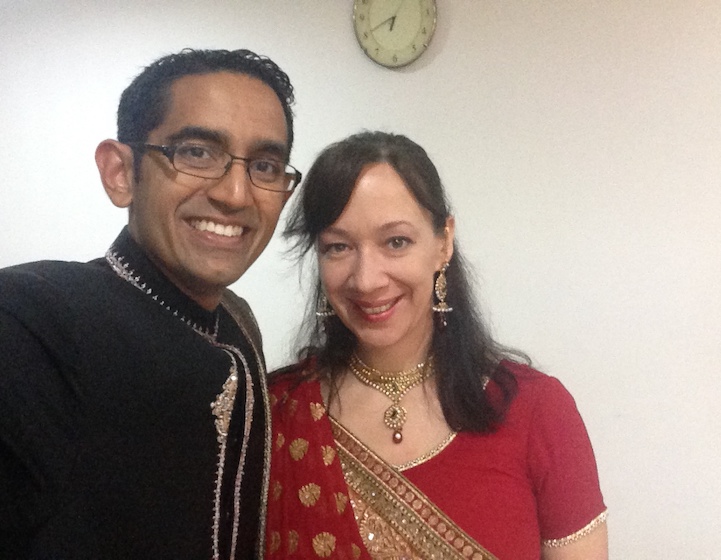
Getting a sari on, however, is another story. I haven’t mastered the process and am totally dependent on expert help. For me it takes at least four hands and a handful of safety pins to put on a sari, and I admire the Indian woman who effortlessly pleats and pins her own sari in five minutes flat. For me, it can be a process that takes up to an hour! So, needless to say, I rarely wear the beautiful saris that fill several of my closet drawers.
Yet saris and Indian culture are a part of my identity now. Having married into an Indian family, I have learned a lot about cultural norms and expectations that I never discovered as an American looking in from the outside. That’s the beauty of integration into a different family, or immersion in a different culture. I love living outside my home country, because I learn so much about a new culture and myself. More than that, I love the process of assimilation because it forces me to think critically about values and norms, traditions and lifestyle, things that would otherwise be as natural as breathing. I have come to recognise the importance of compromise, of understanding more deeply what makes someone behave in a certain manner, and to see the common threads between different cultures.
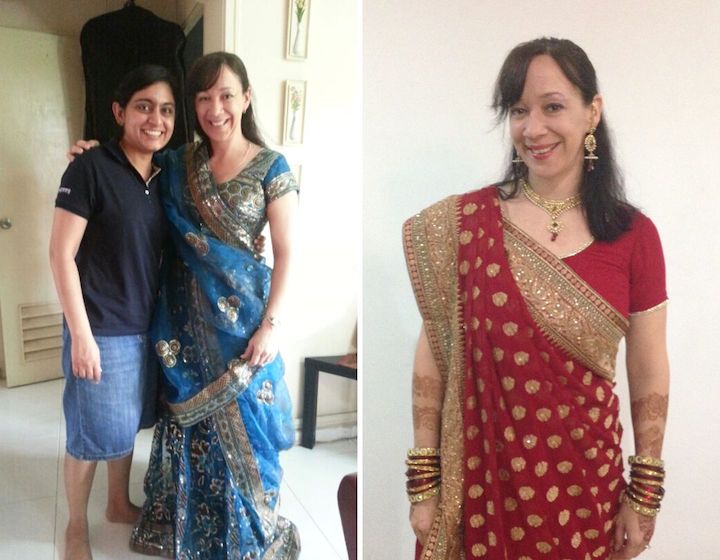
These are values I hope to impart to my three children: to be curious, ask questions and to try to understand the reason behind the actions of others. Living overseas as a child and again as an adult has afforded me the opportunity to interact with a lot of people who are different from me, and I am so grateful to be able to pass that on to my kids.
Read More: Celebrating Mixed Race Families in Singapore
They are American Singaporean, Caucasian-Indian, and their friends are Chinese, Malay, Indian, and all sorts of ethnic combinations. They enjoy food from a variety of different cultures, and have a multi-ethnic wardrobe. But on a deeper level, they recognise that these differences are less important than things we share in common with others.
Sometimes it may take a few hands and a bunch of safety pins, but it’s worth the effort to build understanding across cultural boundaries. And the result can be stunning! Maybe I should pull out those saris for my next date night!
Read More:






 View All
View All





 View All
View All








 View All
View All






